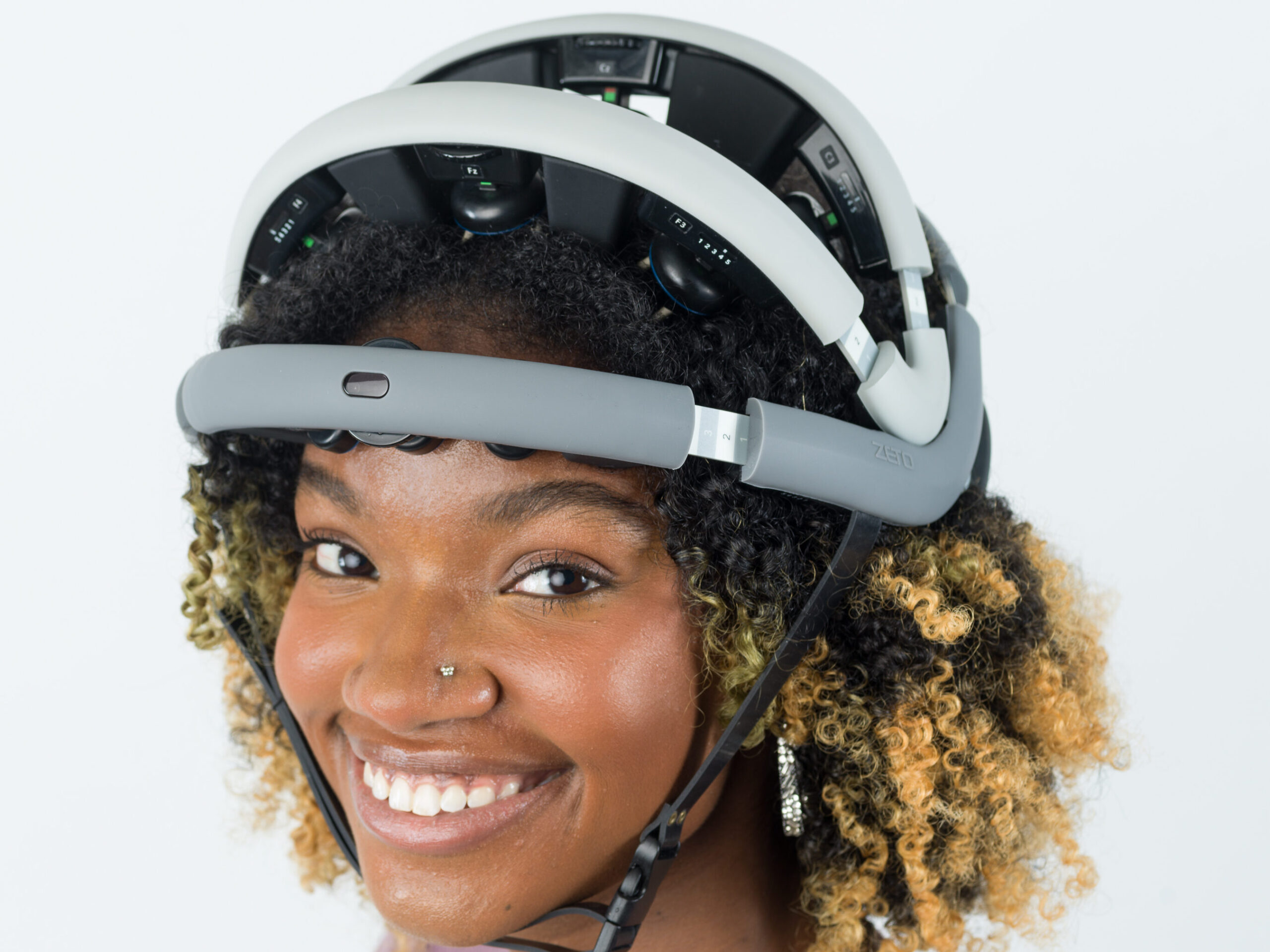Routine EEGs are one of the cornerstones of neurological care[1], yet traditional EEG systems often create unnecessary hurdles. It enables non-emergency diagnosis, extended follow-up of many types of neurological conditions, and the performance of non-emergent EEGs.
For practices with limited resources there can be significant scheduling constraints (and no possibility of scheduling many consecutive patients) to messy gels, sticky pastes, and time-consuming set-up processes, the old way of doing things isn’t just inefficient—it’s inconvenient for patients, eeg technicians and medical providers.
Enter Zeto WR19 EEG headset: a wireless, no-gel EEG solution that’s reshaping how neurologists approach routine testing.
Here’s how Zeto transforms the routine EEG experience and contributes to improving outcomes for doctors, patients, and practices:
1. EEG Solutions When Techs Aren’t Available
EEG Technicians are considered the gold standard for EEG performance, but they’re not always available. Zeto offers flexibility to EEG workflows, enabling medical assistants (MAs) to perform tests when needed. This can help practices reduce reliance on strict scheduling, making it easier to conduct EEGs without waiting for technician availability.
Benefits of Zeto for Routine EEG include:
- Reduced scheduling complexity: Patients can have their EEG performed during regular office visits without the need to schedule several weeks out. Due to the ease of set-up and lack of cleanup needed, an office can schedule consecutive EEGs, maximizing their resources.
- Enhanced flexibility: EEGs can be offered on-demand, streamlining workflow and reducing delays in diagnosis.
- Improved patient compliance: By eliminating scheduling barriers and increasing patient comfort during the recording, patients are more likely to follow through with testing.
“I love it because our MAs (medical assistants), who were trained by the Zeto team, can set up and run the EEG studies. If they ever have issues, I step in to troubleshoot, but this is really rare. We have been able to work more efficiently with the limited resources we have, which is important because I am in a multispecialty private practice group.” – Dr. Komal Rastogi, Granger Medical Clinic.
2. Five-Minute Setup and Ease of Use
Zeto’s wireless, rapid EEG system is designed for efficiency in routine EEG use. The headset enables quick and easy setup in about 5 minutes, meaning less time preparing for the test and more time focusing on the patient. The no-gel electrodes eliminate the hassle of cleanup, and removal is just as simple, taking only one minute.
Why Ease of EEG Setup Matters:
- Faster setup means less time preparing for the test and more time focusing on patient care.
- The streamlined process enables practices to serve more patients in a day, improving patient care and speeding up clinical diagnosis.
- Faster testing means patients spend less time in the office, which they appreciate.
“The setup for routine EEG has decreased to 5-10 minutes from previous durations of 30 minutes to 1 hour. Quality of both EEG and video is very impressive.” – Dr. Raj Gupta, San Jose Pacific Neurology Center PC.
3. No Gel, No Mess, More Patient Comfort
Gone are the days of sticky gels and lengthy cleanup times. Zeto’s no-gel system[2] makes EEGs more comfortable for patients and easier for staff.
Patient benefits include:
- Comfort: Without messy gels, patients don’t have to deal with the discomfort and inconvenience of washing their hair after the test.
- Convenience: Patients can resume their day – whether going back to work, school, or home – immediately after the procedure.
This improved patient experience increases compliance with testing, making it easier for neurologists to provide timely care.
“Patients find the experience quicker and more streamlined, resulting in shorter visits compared to traditional setups. Overall, they respond positively to the technology. I have personally worn the Zeto headset for extended periods and can attest to its comfort.” – Dr. Christina M. Patterson, UPMC
4. Remote Access for Results, Anytime, Anywhere
Zeto’s cloud-based platform enables neurologists to access EEG results remotely[3], providing flexibility. This makes it possible for tests to be performed in one location while neurologists review the results if needed in real time from another, facilitating faster diagnoses and streamlined workflows.
Benefits for neurologists:
- Efficient workflows: No need to be physically present to review results and make a diagnosis.
- Faster diagnoses: Immediate access to EEG studies speeds up the diagnostic process.
“I’ve been remotely reading EEGs done by the Zeto EEG headset for one of my local colleagues through Zeto’s EEG cloud platform since the beginning of 2022. How it works: EEGs are done in the clinic here in San Diego by trained staff. The EEG is streamed and saved in real-time to the Zeto cloud and I receive a notification when the recording is finished. At that point, I go online, read the EEG study, and prepare the report. Overall, the process is easy, fast, and straightforward.” – Dr. Boris Khamishon, Neurology San Diego
5. Transforming Neurology Workflows
By integrating Zeto into their practices, neurologists have found their workflows become more efficient, patient-friendly, and seamless. The ability to offer on-demand EEGs keeps things running smoothly and increases the speed of care.
Key impacts include:
- Increased patient compliance: Patients are more likely to follow through with testing when it’s convenient and hassle-free.
- Streamlined care: On-demand EEGs eliminate bottlenecks, enabling for faster diagnoses and improved outcomes.
- Improved patient care: Timely EEG testing ensures patients receive the diagnostics they need without unnecessary delays, enhancing treatment planning and overall care quality.
“In the short term, we were able to quickly address a backlog of 100+ patients (and incoming new ones) within just a few weeks. In the long term, with how easy the system is to use, we are not bottlenecked to only certain staff members and their availability to utilize the device and ensure essential diagnostics were getting completed in a timely manner.” – Dr. Randi Baculi, RHBNeuro
6. Perfect for Solo Neurologists: Ease of Use That Saves Time and Costs
For solo neurologists, Zeto’s intuitive design makes performing EEG studies seamless. The headset is easy to apply with minimal artifacts[4], enabling practitioners to focus on patient care without the need for additional staff or complicated scheduling.
Benefits include:
- Increased efficiency: Solo practitioners can perform EEGs independently without needing to rely on additional staff, and use the time between studies for administrative tasks or patient care.
- Flexibility: Ideal for part-time neurologists or those performing a limited number of studies per week.
- Accessible support: Zeto offers easy access to technical assistance for troubleshooting when needed.
“I’m my own technician. I work part-time and perform 2 to 4 EEG studies a week, or about 12-15 studies a month. Technical assistance is easy when I have questions. It’s easy to use and maneuver. I usually read the results immediately after seeing patients and share the results in near real-time.” Dr. Virginia Thornley, Elite Neurology
7. Cloud-Based Software: Seamless and Up-to-Date Technology
Zeto’s cloud platform ensures that its software is always up-to-date, requiring minimal IT expertise or budget.
Benefits include:
- User-friendly interface: The intuitive design makes reading EEGs straightforward and accessible.
- Cross-device compatibility: Works effortlessly across laptops, phones, tablets, and desktop computers.
- Streamlined accessibility: The cloud system provides reliable access, eliminating the need for complex setups or maintenance.
“The cloud interface is truly wonderful – user-friendly, easy to access, and visually appealing. I’ve used it on various devices, and it has consistently provided a seamless and headache-free experience.” Dr. Christina M. Patterson, UPMC
Zeto’s cloud-based platform meets stringent data security standards, such as HIPAA compliance, ensuring patient data is safe, accessible, and protected.
8. Report Writer: Designed with Neurologists in Mind
Zeto’s report writer features customizable templates that meet the specific needs of neurologists, enabling easy adjustments.
Benefits include:
- Time-saving templates: Streamlined templates reduce the time spent on documentation.
- Accessibility: Reports can be reviewed and adjusted from any device with internet access using the same login credentials.
- Flexibility: Neurologists can adapt templates to align with individual practice preferences or patient needs.
“The biggest advantage is the Zeto report writer. The template features for the report are designed perfectly for a neurologist’s needs, and it’s very easy to make adjustments. The program is also easy to maneuver, and you can read the EEGs from any computer or device with a stable internet connection using the same login credentials.” – Dr. Boris Khamishon, Neurology San Diego
9. Accommodates All Hair Types
Zeto’s innovative electrode design eliminates barriers for patients with thick, curly, or styled hair, such as braids or dreadlocks.

Benefits include:
- Patient comfort: No need for patients to alter or remove hairstyles, reducing stress and preserving dignity.
- Cultural inclusivity: Accommodates protective hairstyles often tied to culture and identity.
- Unique electrodes: Zeto’s patented electrodes can move past braids, cornrows, twists, or dreadlocks up to 1 inch thick and even work with thicker hair bundles.
We’ve written an entire blog on this topic: Textured Hair EEGs: Accessibility for All Hair Types
10. Signal Quality on Par with Traditional EEG Systems
Zeto is committed to delivering high-quality EEG brain monitoring results. With full-montage 10-20 electrode placement and advanced technologies such as Active Electrode Technology (AET) and Dynamic Noise Cancellation (DNC), Zeto provides data that is non-inferior to traditional EEG systems.
Benefits include:
- Reliable results: Signal quality is the same as traditional EEG systems but the setup is easier and faster and no gel is included.
- Evidence-backed performance: Clinical studies across 50 subjects demonstrated parity between Zeto EEG (zEEG) and clinical EEG (cEEG) systems.
“I like the idea of quick setup using soft gel electrodes like Zeto. It’s an easy & efficient way to do quality routine video EEGs”. Dr. Jaivir S. Rathore, Falcon Advanced Neurology Center.
For a deeper dive into Zeto’s signal quality, read our article, “Comparison of Dry Electrode EEG System with Conventional EEG System,” or review the abstract, “Technical Validation of the Zeto Wireless, Dry Electrode EEG System,” presented at the American Epilepsy Society.
Zeto’s signal quality meets the performance and technical standards outlined in EEG Guidelines provided by American Clinical Neurophysiology Society (ACNS).
The Future of Routine EEGs is Here
Zeto’s WR19 EEG system is more than a technological upgrade — it’s a practical solution that addresses the inefficiencies of traditional EEG workflows. By making EEGs faster, more comfortable, and more accessible, Zeto is helping neurologists provide better care for their patients.
Take advantage of Zeto’s end-of-year offer for neurology practices: upgrade your routine EEG workflow with our wireless, no-gel EEG system by the end of the year and enjoy the . Don’t miss this limited-time opportunity to revolutionize patient care and streamline your practice — offer ends December 20th, 2024!
References:
- Worrell, G. A., Lagerlund, T. D., & Buchhalter, J. R. (2002). Role and Limitations of Routine and Ambulatory Scalp Electroencephalography in Diagnosing and Managing Seizures. Symposium on Seizures, 77(9), 991–998.
- Sensors (Basel). (2014, July 18). Dry EEG Electrodes – PMC, 14(7), 12847–12870. doi: 10.3390/s140712847
- Reider-Demer, M., & Shah, V. (2019, October). Telemedicine & Epilepsy: Your Smartphone Is Not Just for Communication – It Can Be Your Medical Care on the Go! Practical Neurology.
- Lopez-Gordo, M. A., Sanchez-Morillo, D., & Pelayo Valle, F. (n.d.). Common Artifacts During EEG Recording. In Electroencephalography (EEG): An Introductory Text and Atlas of Normal and Abnormal Findings in Adults, Children, and Infants. NCBI Bookshelf.
Interested in learning more about this topic?
Stay tuned for upcoming articles. If you haven’t already, subscribe to our newsletter or follow us on LinkedIn. Interested in a demo? Click here to schedule yours now.

